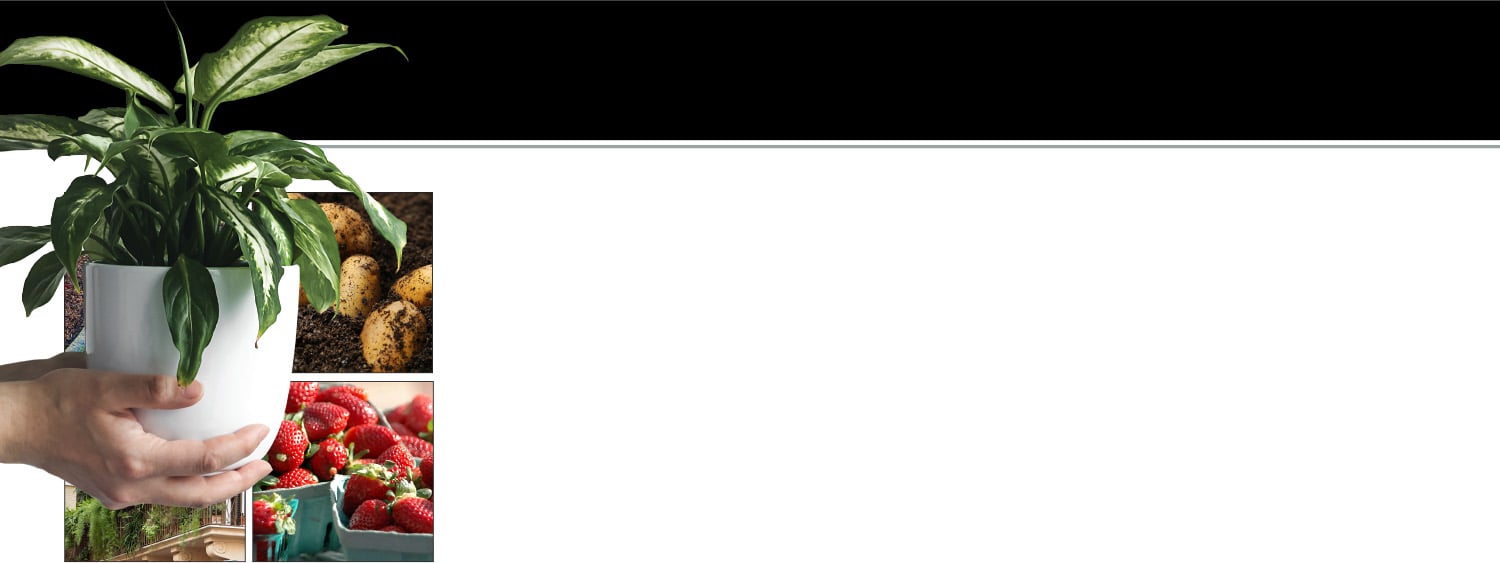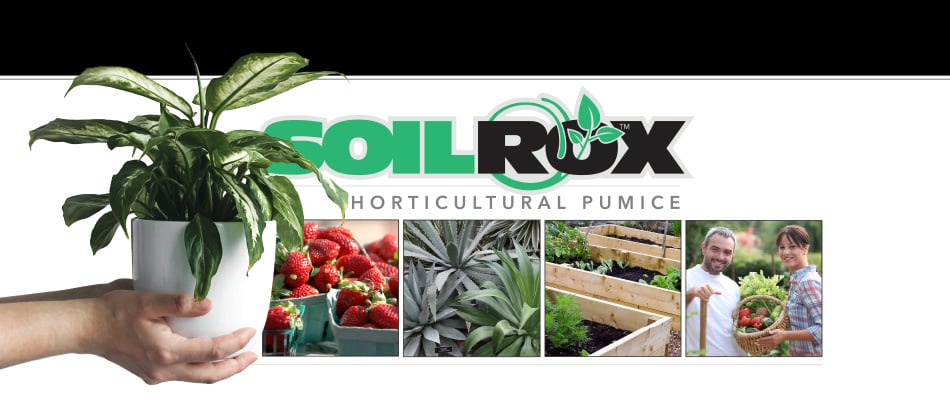SOIL-CONDITIONING PUMICE

Sourced from the world’s purest commercial deposit of white pumice, SoilRox™ is effective, economical, sustainable, and ready to blend into soil.
Why SoilRox™ Works
SoilRox™ works within the soil on two levels. The first is as a structural conditioner, physically amending poorly structured soils—like a heavy clay—to be less dense by holding the soil particles apart, creating elemental tilth and friability that allows development of vibrant, deep-rooted plants. This improvement in the distribution of the micro and macro spaces in the soil also enhances root zone breathability and drainage.
The second key benefit comes from the foamy, sponge-like nature of the pumice stones themselves: the stones—including the fines—are riven with nooks and crannies and pockets that hold moisture and nutrients in the root zone and available to the root systems over a longer period of time. The sponge-like texture of the tiny pumice stones also provide a great matrix for colonies of beneficial soil microbes.
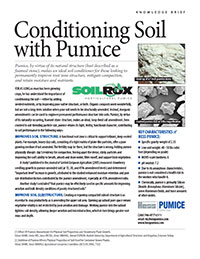
Download Knowledge Brief: Conditioning Soil with Pumice
Though naturally lightweight—important for engineered soils designed for roof gardens and raised planter beds—SoilRox is a bit heavier than expanded perlite and vermiculite, so does not tend to work its way to the surface over time. The irregular, grippy edges of the stone also work to bind it into the soil matrix.
SUPPORTING RESEARCH
A study1 published in the Journal of Central European Agriculture (2005) measured strawberry seedling growth in pumice-amended soil (at 15, 30, and 45% amendment levels) and determined “important level” increase in growth, attributed to the studied enhanced moisture retention and pore size distribution factors contributed by the pumice amendment, especially at 45% amendment ratio.
[1] Effect Of Pumice Amendment On Physical Soil Properties and Strawberry Plant Growth. Ustun SAHIN, Selda ORS, Sezai ERCISLI, Omer ANAPALI, Ahmet ESITKEN; Atatürk University, Department of Agricultural Structures and Irrigation, Erzurum-Turkey
Another study2 concluded “that pumice may be effectively used in specific amounts for improving aeration and bulk density conditions of poorly structured soils.”
[2] Addition of Pumice Affects Physical Properties of Soil Used for Container Grown Plants. Ustun SAHIN, Omer ANAPALI; Agriculturae Conspectus Scientificus (ACS) 01/2006; 71(2)
The Australian Journal of Crop Science published a study3 that looked at adding pumice to achieve gains in soil moisture absorption and retention for maize (corn) crops. The results showed that “pumice significantly (> 0.05) increased the amount of soil moisture retention compared to control. Growth characteristics of maize (vegetative growth and yield) were significantly improved with increasing amount of pumice concentration” with the max results obtained with the 30% pumice application.
[3] Soil Water Retention and Maize Growth as Effected by Different Amounts of Pumice. Ashraf Malekian, Einollah Valizadeh, Mona Dastoori, Sohaila Samadi, Vahid Bayat; Department of Agriculture, Payame Noor University, Tehran, Iran
SoilRox™ is an Enduring Amendment
Organic composts are wonderful and a great addition to any soil improvement effort, but any structural improvements from the compost are lost as, over time, compost breaks down and is consumed. Without a steady schedule of compost re-application and blending/tilling, the structural advantage provided by compost is lost as the soil returns to its poorly structured native state. SoilRox is inorganic and will not break down. It remains indefinitely in the soil, providing vital structural support in terms of drainage, moisture retention, nutrient retention, and elemental tilth. In applications that are not replanted on a annual basis—like lawns and other living ground covers, perennial flower beds, fruit-bearing plots, damaged soil reclamation projects, drainage and bio-filtration constructs—that’s an extremely valuable benefit4.
SoilRox is easily blended with composts to provide the ideal long-term solution to fix-it and forget-it applications like lawns, parks, runoff control constructs, and reclamation projects. The compost provides the kick-start nutrient base to poor or damaged soils, with the pumice remains long after the compost is consumed to provide the elemental tilth that in necessary for the on-going vitality of the newly-established vegetative cover.
[4] Shortcomings of Native Seeding Project Implementation; Western Chapter of IECA Newsletter, Spring 2006
SoilRox™ Green Cred
As pumice is the result of intense volcanic action, it is naturally calcined (super-heated), meaning its amorphous (non-crystalline), foamed glass character is ready-made. Pumice does not need to be super-heated in a kiln and expanded, or popped, to achieve its useful physical state. Other soil amendment products on the market—perlite and vermiculite, expanded clay or shale products (like Utelite™ or Perma-Till™)—are mined as a hard ore, crushed, then flash-fired under intense heat to acquire their pumice-like usefulness.
In-Soil Performance vs. Perlite
Perlite is arguably the most recognizable and widely used non-compost soil amendment in horticulture, especially for potting and garden soils. It is valued for its contribution to desirable soil structure and water and nutrient retention. But the process of flash-heating perlite ore to expand it adds to the cost and the carbon footprint of perlite, and that cost make the use of perlite prohibitive for large-scale amendment projects.
There is no performance drop using pumice. A University of Illinois study5 evaluated pumice as a perlite substitute for amending growing soils. Specifically, chemical properties and surface characteristics were compared and proved analogous, with pumice exhibiting a greater pore size span. From the report summary: “Pumice and perlite were shown to have similar physiochemical properties which subsequently translated into similar behavior in blended soil mixtures. It proved equally, if not even more effective in some ways than perlite. A subsequent companion plant growth study (not reported herein) further confirmed the suitability of pumice as a soil amendment. Plants grew equally well in pumice and perlite media.”
[5] Evaluation of Pumice as a Perlite Substitute for Container Soil Physical Amendment. Dianne A. Noland , L. Art Spomer & David J. Williams; Department of Horticulture, University of Illinois, 1201 South Dorner Drive, Urbana, 61801–4720
SoilRox™ Tech Data
SoilRox™ is an Amorphous (no crystalline structure) Aluminum Silicate made primarily of Silicon Dioxide (76.2%), Aluminum Oxide (13.5%) and less than 2% of several other oxides—Ferric Oxide, Sodium Oxide, Potassium Oxide, Calcium Oxide, Titanium Oxide. As detailed above, pumice has a long in-soil lifespan, but microbes in the soil will slowly break it down on a molecular level, making the Silicon Dioxide, Calcium, Potassium and other oxides available as trace nutrients to growing plants.
SoilRox is pH neutral (7.2) and will not alter the acidity or alkalinity of your soil or potting media.
SoilRox has a specific gravity of 2.35 and a loose bulk density ranging from 64 lbs/cubic foot for the small+fines grades to 47 lbs/cubic foot for the large stones. This bulk density helps anchor roots in the soil while providing improved aeration, texture and friability in heavy soils. For specialized potting soils, the bulk density of pumice will help anchor plant roots and hold outdoor containers in place.
Depending on the SoilRox media size/grade you purchase, the media may be dry (Enhancer • NF) or slightly damp (Amender • XF; Blend • SF). The slight moisture content in the grades containing the fines helps control the dust without affecting the blendability.
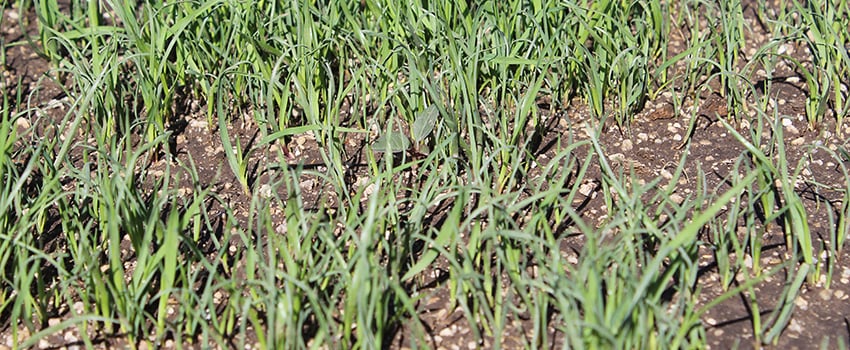
A closeup of a newly-sprouted lawn growing in topsoil blended with SoilRox™ (Amender • XF) six to eight inches deep. Visible are some of the 1/8-inch pumice stones; the pumice fines, though not visible on the surface, perform in conjunction with the larger stones in the clayey top soil, greatly improving the soil by maintaining vital friability and elemental tilth while facilitating drainage and deep roots while, at the same time, retaining moisture and nutrients in the root zone.
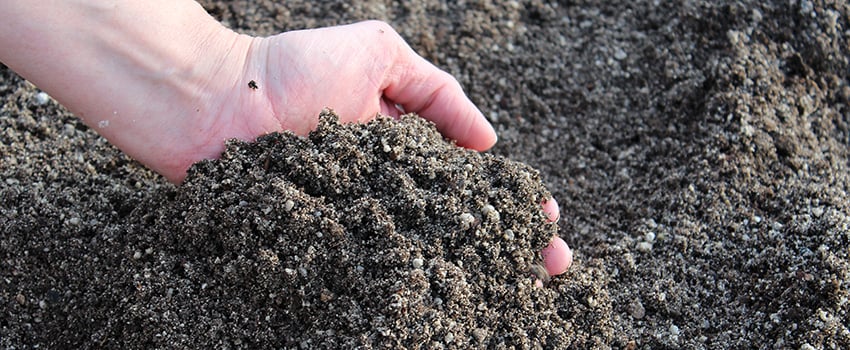
In this image, the SoilRox™ (media size: Amender • XF) is clearly visible—including the fines—in this garden soil blend of silty topsoil, compost, peat moss, and SoilRox.
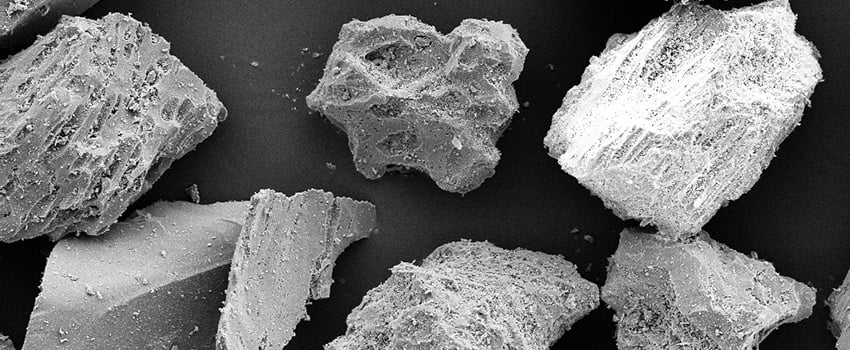
This micrograph of SoilRox™ fines shows the grippy edges that keep it functionally suspended within in the soil and the nooks and crannies that capture and hold moisture and nutrients for on-demand uptake by the root system.
